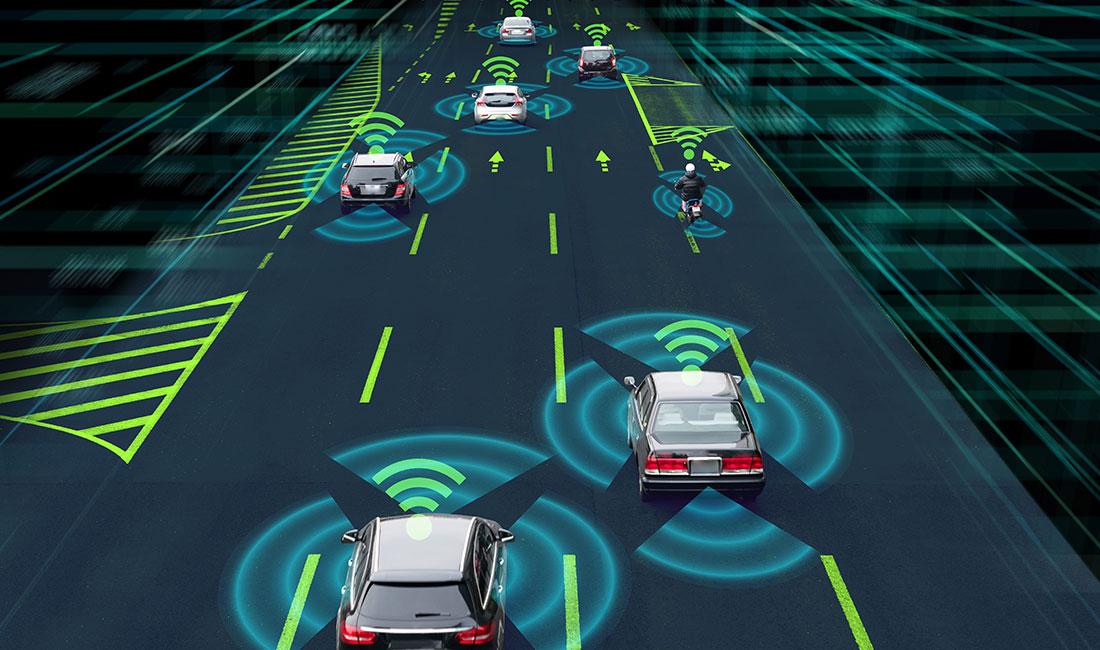Attention
This website is best viewed in portrait mode.
Publication Name: Deccanherald.com
Date: December 12, 2022
How connected vehicles can make Indian roads safer

V2X technology can alert drivers about an approaching ambulance, even when it is a kilometre away
An ambulance getting caught in an insane traffic jam is a frequent sight on Indian roads. While many people make peace with this reality helplessly, the future of emergency-vehicle transport could be different with connected automobiles, industry experts told DH.
V2X technology can alert drivers about an approaching ambulance, even when it is a kilometre away, such that they can decongest the lane for the high-priority vehicle, said Ashwin Ramachandra, Practice Head - Digital Services (Transportation) at Tata Elxsi.
V2X or Vehicle-to-everything (X) is a form of communication between a vehicle and any entity (X) that may affect, or may be affected by, the vehicle, using the connectedness of vehicles. This entity could be another vehicle, a pedestrian, a traffic signal or other traffic infrastructure.
Maruti Suzuki, Suzuki Motor Corporation of Japan, IIT-Hyderabad and a few partners have already demonstrated the use case of the Ambulance Alerting System, said Nomura Auto Retail Practice Head Harshvardhan Sharma.
“With V2X, an ambulance or an emergency vehicle can ‘communicate’ with cars by sending out alerts to make way.”
With about 80-85% of Indian cars still not connected, V2X is likely to shape the future of mobility in a significant manner, said Ramachandra. The automotive V2X market is slated to grow at an annual rate of 38% to more than $2.2 billion in 2025 from $619 million in 2021, as per a report by Research and Markets. Unlike existing safety conversations, which only look at vehicles as active participants, V2X gives room for participation of all parties involved, said experts. “All participants in road traffic will be able to anticipate other party’s behaviour and urgency (if any), hence mitigating road incidents and traffic challenges,” said Sharma.
V2X is being dubbed as the magic bullet to address many mobility problems of the world’s fourth-largest automobile market, including congestion and road safety.
“Coming from a congested city like Bengaluru, the first thing that comes to my mind is giving real-time data status of the location. This could be very useful for traffic administration to monitor traffic congestions and roadblocks,” said Latha Chembrakalam, Vice president and Head of Technical Center – India, Continental.
Road condition monitoring that can indicate slippery roads, dangerous curves, potholes and roads under repair can also enhance road safety. These use cases can be made possible by monitoring data from different connected vehicles and giving recommendations using AI models, added Chembrakalam.
Road accidents are one of the leading causes of death, disability and hospitalisation of people globally and particularly in India. At least one out of 10 people killed on roads across the world is from India, according to the World Health Organisation.
Solving the problem of speeding vehicles approaching from blindspots could also be one of the possible applications of connected vehicles to avert accidents, said others.
“V2V (vehicle-to-vehicle) communication technology is very promising and ADAS (Advanced Driver Assistance Systems), which works beyond the line of sight, is a key enabler for safety and ease of navigation (in city traffic),” said Mahindra Research Valley Principal Chief Engineer Binoy Paul.
The convenience factor
Besides adding to the driver’s safety, the connectedness of the vehicles can also improve the experience and comfort of driving. Automakers need to ensure that the connected vehicles can provide something of value that the ubiquitous smartphone cannot give, said Paul. “Though connectivity enables prognosis (and) tracking of vehicles, the customer may not see immediate value in these and may be reluctant to pay for these services. With 5G enabling faster video transfer, we can also look at holding vehicle repair and maintenance discussions virtually,” he added.
Besides enabling entertainment, an electric and connected vehicle can also effectively address the range anxiety of drivers by helping in finding charging points. “A connected vehicle will search for the shortest and fastest route and optimise the route based on the location and queue status of charging stations. Going forward, a precise estimation of EV’s range based on the geographical topology is possible since an EV spends more energy to climb up difficult terrain, thereby reducing its range,” said Paul.
While many of the applications of connected vehicles and V2X technology are limited to developed markets with solid infrastructure, they could still be leveraged to bring in a handful of India-specific use cases. “The tenets of V2X are for vehicles to ‘interact’ (with) their environment, including other form factors and traffic infrastructure. It is especially critical for us in India as we have a wide multimodal and rapidly-evolving mobility spectrum ranging from bullock carts to 5G-enabled cars.” Sharma said. “The technology has to be designed for Bharat.”




